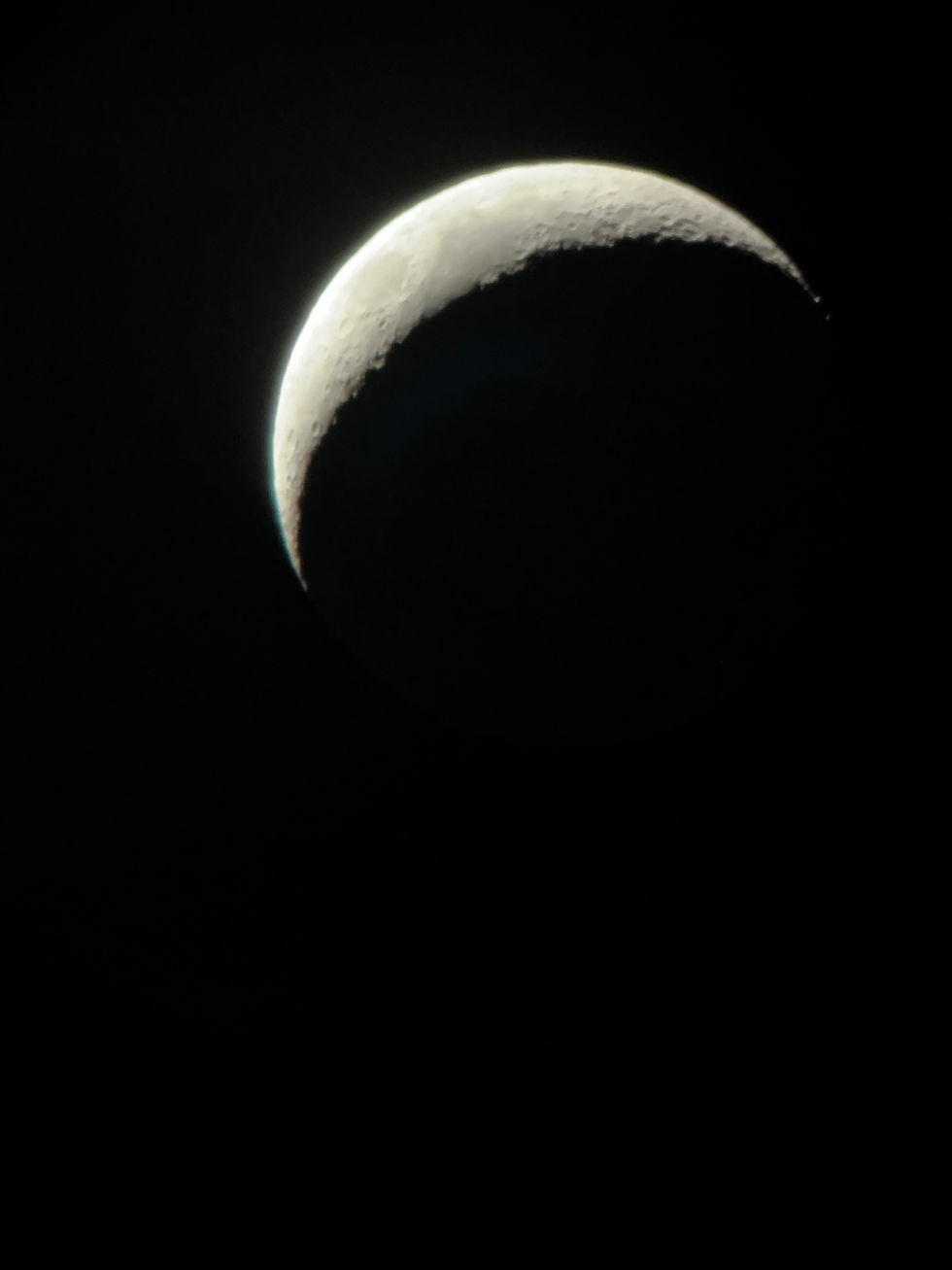Moon
- Pierre Moutounet-Cartan
- Dec 8, 2024
- 2 min read
Updated: Feb 19
About this object
The Moon, Earth’s steadfast companion, has captivated humanity for millennia. Hanging luminous in the night sky, its silvery glow inspires poets, scientists, and dreamers alike. More than just a celestial ornament, the Moon is a geological archive, its surface scarred with craters and seas of frozen lava that whisper secrets of our solar system's turbulent past. It governs the tides, anchors Earth’s axis, and serves as a stepping stone for interstellar ambitions. Whether gazed upon through a telescope or admired with the naked eye, the Moon remains a timeless symbol of wonder, mystery, and the enduring human spirit of exploration.
Designations
PMC Observatory Catalogue
Observations
2024-12-08 at around 10:00 pm (+00:00)
2024-12-15 at around 01:30 am (+00:00)
2024-12-18 at around 07:00 am (+00:00)
2024-12-20 at around 07:00 am (+00:00)
2025-01-02 at around 07:00 pm (+00:00)
2025-01-03 at around 07:00 pm (+00:00)
2025-01-06 at around 07:00 pm (+00:00)
2025-01-09 at around 10:00 pm (+00:00)
2025-02-01 at around 08:00 pm (+00:00)
2025-02-18 at around 06:30 am (+00:00)
Photographs








